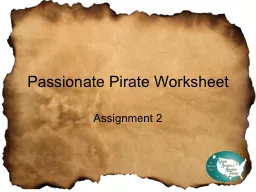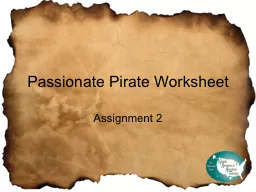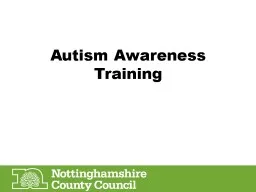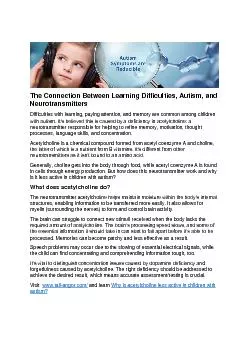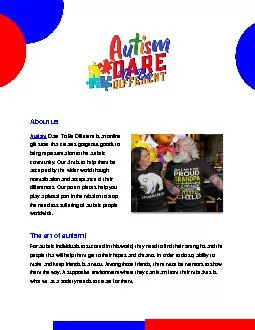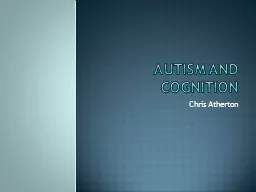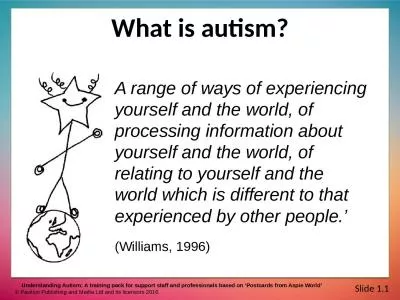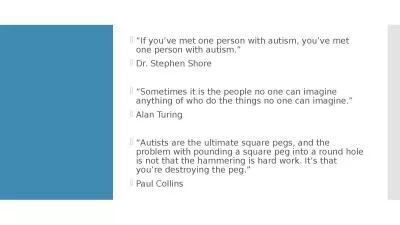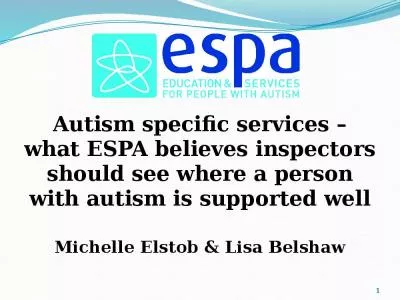PPT-The Passionate Mind: How people with autism learn
Author : sherrill-nordquist | Published Date : 2019-12-09
The Passionate Mind How people with autism learn Dr Wendy Lawson MAPS MBPsS 2011 What to expect from this presentation Wendy talks about the personal journey of
Presentation Embed Code
Download Presentation
Download Presentation The PPT/PDF document "The Passionate Mind: How people with aut..." is the property of its rightful owner. Permission is granted to download and print the materials on this website for personal, non-commercial use only, and to display it on your personal computer provided you do not modify the materials and that you retain all copyright notices contained in the materials. By downloading content from our website, you accept the terms of this agreement.
The Passionate Mind: How people with autism learn: Transcript
Download Rules Of Document
"The Passionate Mind: How people with autism learn"The content belongs to its owner. You may download and print it for personal use, without modification, and keep all copyright notices. By downloading, you agree to these terms.
Related Documents


